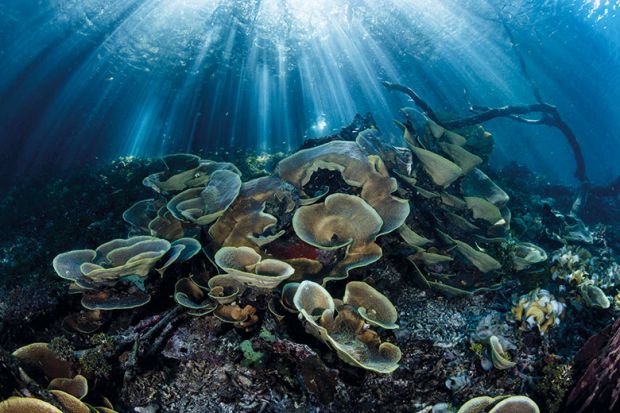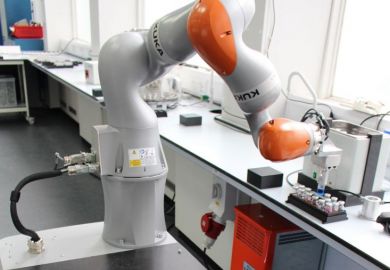Every carbon atom contains six positively charged protons at its centre (the nucleus). Almost all carbon atoms are either 12C (six protons and six neutrons) or 13C (six protons and seven neutrons). Roughly one carbon atom per trillion has eight neutrons in its nucleus, forming radioactive (hot) 14C, aka carbon-14. This isotope is the star of oceanographer John Marra’s excellent monograph, beginning with its discovery in 1940 by Martin Kamen and Sam Ruben and its early use in photosynthesis research, in Melvin Calvin’s laboratory. The greater part of the book describes the development and the science behind radiocarbon dating, which relies on 14C, and the wide range of applications of this technology.
Carbon dating, which was developed in the 1940s by the US chemist Willard Libby, is possible only through a lucky conjunction of circumstances. In the upper atmosphere, cosmic rays (high-energy electromagnetic radiation) undergo a nuclear reaction with atmospheric nitrogen, creating a steady stream of 14C atoms. These rapidly combine with atmospheric oxygen to form radioactive carbon dioxide, which, once it has diffused through the atmosphere and reached Earth, can be incorporated into plants through photosynthesis. Ongoing photosynthesis keeps the concentration of 14C in the living plant constant, through an exchange process. But when the plant dies, it stops exchanging carbon with its environment and the amount of 14C that it contains begins to decrease as the 14C undergoes radioactive decay. Once the amount of 14C remaining in a sample has been measured, it becomes relatively simple to calculate roughly how long ago it died. The half-life of 14C is 5,730 years, so the method can be applied to samples up to around 50,000 years old – after nine or 10 half-lives of decay, there is little 14C left to measure.
The use of the radiocarbon method to determine the age of artefacts such as the Turin shroud is now well known. In 1989, three academic laboratories independently showed that the shroud is definitively less than 800 years old and so cannot have been used to wrap the body of Christ. Much more significant is the use of radiocarbon dating in the study of the Earth’s oceans and climate.
It has long been recognised that ocean currents move massive amounts of water over long distances and that such movements have great importance for human life – think of the Gulf Stream. Through almost Herculean efforts, oceanographers have determined the courses that many currents follow. Carbon dating, says Marra, provides unique information on the kinetics of ocean flow, particularly the interchange between surface and deep ocean water and how long this takes. His own research has been into photosynthesis in the oceans and the involvement of microscopic phytoplankton. It is probably my fault that I found the details difficult to follow.
The book’s last, fascinating chapter deals with the contribution that 14C is making to explaining the significant, sometimes very rapid, changes that have occurred in the Earth’s temperature over the past 50,000 years. As with earlier chapters, it also brings alive the personalities of the main scientists involved.
It has been a joy to read an academic book where the author did not seek to dazzle by his own brilliance. It was even a greater joy to find a narrative strong enough to sustain my interest from beginning to end.
Richard Joyner is emeritus professor of chemistry at Nottingham Trent University.
Hot Carbon: Carbon-14 and a Revolution in Science
By John F. Marra
Columbia University Press, 280pp, £27.00
ISBN 9780231186704
Published 25 June 2019



